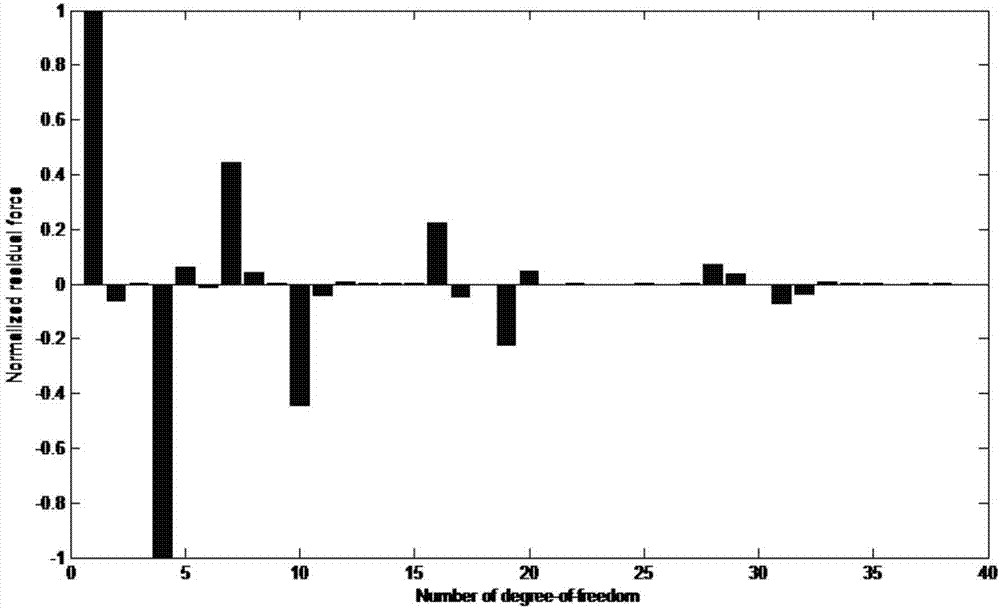Damage identification method of axial functionally graded beam
A functional gradient and damage recognition technology, which is applied in special data processing applications, instruments, electrical digital data processing, etc., can solve the problems of low recognition efficiency, reduced precision, damage misjudgment, etc., and achieve good robustness, high precision, The effect of improving recognition accuracy and calculation efficiency
- Summary
- Abstract
- Description
- Claims
- Application Information
AI Technical Summary
Problems solved by technology
Method used
Image
Examples
Embodiment 1
[0051] Example 1: Damage identification for axially functionally graded simply supported beams
[0052] Such as image 3 The simply supported beam with a rectangular cross-section is shown, the geometric parameters are shown in the figure, and the structural parameters are: the material on the left is pure aluminum, Young’s modulus E l =6.9×10 10 N / m 2 , material density ρ l =2700kg / m 3 , the material on the right is pure steel, Young’s modulus E r =2.1×10 11 N / m 2 , material density ρ r =7800kg / m 3 , the power rate of the functionally graded beam is 1.5, that is, the change of elastic modulus and density from left to right is: E(x)=(E L -E R )(1-x / L) θ +E R , ρ(x)=(ρ L -ρ R )(1-x / L) θ +ρ R . Decompose the simply supported beam into image 3 Twelve functionally graded beam elements are shown. Assume that the loss factor of unit No. 1 is 0.05, that of unit No. 1 is 0.1, that of unit No. 6 is 0.15, and that of unit No. 10 be 0.2.
[0053] The RFV values of ...
Embodiment 2
[0055] Example 2: Damage identification for a four-span functionally graded beam
[0056] Such as Figure 6 In the four-span beam structure shown, the length of each span is l=3m. The structure is divided into 60 functionally graded beam units, the material on the left is Ti-6Al-4V alloy, Young's modulus E l =1.05×10 11 N / m 2 , material density ρ l =4429kg / m 3 , the material on the right is zirconia ZrO2, Young's modulus E r =1.68×10 11 N / m 2 , material density ρ r =3000kg / m 3 , the power rate of the functionally graded beam is 1.5. Assume a 5% loss in unit 2, a 10% loss in unit 8, a 15% loss in unit 18, a 20% loss in unit 28, and a 5% loss in unit 33 , Unit 38 suffered a 10% loss and Unit 48 suffered a 15% loss.
[0057] The RFV value of each node is as follows Figure 7 As shown, it can be seen that units 2, 8, 18, 28, 33, 38, and 48 are suspicious units that may be damaged.
[0058] Dynamic loads applied at nodes 8, 17, 34 and 36 Extract the displacement res...
PUM
| Property | Measurement | Unit |
|---|---|---|
| Young's modulus | aaaaa | aaaaa |
| Density | aaaaa | aaaaa |
| Young's modulus | aaaaa | aaaaa |
Abstract
Description
Claims
Application Information
 Login to View More
Login to View More - R&D
- Intellectual Property
- Life Sciences
- Materials
- Tech Scout
- Unparalleled Data Quality
- Higher Quality Content
- 60% Fewer Hallucinations
Browse by: Latest US Patents, China's latest patents, Technical Efficacy Thesaurus, Application Domain, Technology Topic, Popular Technical Reports.
© 2025 PatSnap. All rights reserved.Legal|Privacy policy|Modern Slavery Act Transparency Statement|Sitemap|About US| Contact US: help@patsnap.com



